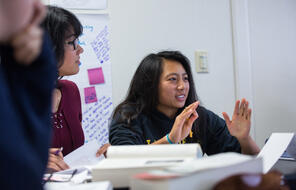
Group Membership and Belonging
At a Glance
Language
English — USSubject
- English & Language Arts
Grade
7–8Duration
One 50-min class period- Culture & Identity
Overview
About This Lesson
There is a universal desire to belong, to feel like we are part of a larger group that values, respects, and cares for us—a group to which we can contribute our ideas and talents. When we feel a sense of belonging, it has positive effects on our self-esteem, agency, and the meaning we ascribe to our lives.
In this lesson, students will analyze an informational text in order to develop an understanding of our innate need to belong and the emotional and cognitive impact that this deep desire to belong can have on us. They will consider the ways in which we may sometimes prioritize our own feelings of belonging and sacrifice our values in the process, while causing harm to others who are outside of our groups. Students’ discussions will help them consider the factors that shape experiences of belonging for themselves and others in their community and world.
Preparing to Teach
A Note to Teachers
Before teaching this lesson, please review the following information to help guide your preparation process.
Lesson Plans
Activities
Extension Activity
Materials and Downloads
Quick Downloads
Download the Files
Download allGet Files Via Google
Group Membership and Belonging
Fitting In Versus Belonging
The Dangers of Being an Outsider
Additional Resources
Unlimited Access to Learning. More Added Every Month.
Facing History & Ourselves is designed for educators who want to help students explore identity, think critically, grow emotionally, act ethically, and participate in civic life. It’s hard work, so we’ve developed some go-to professional learning opportunities to help you along the way.
Exploring ELA Text Selection with Julia Torres
On-Demand

Working for Justice, Equity and Civic Agency in Our Schools: A Conversation with Clint Smith
On-Demand

Centering Student Voices to Build Community and Agency
On-Demand
















